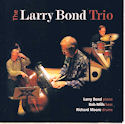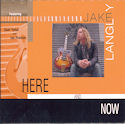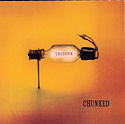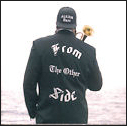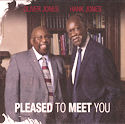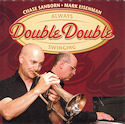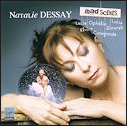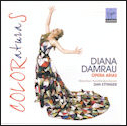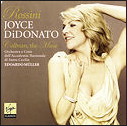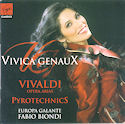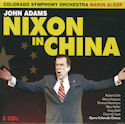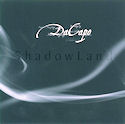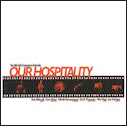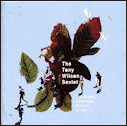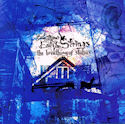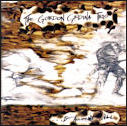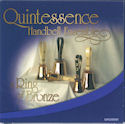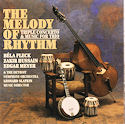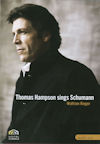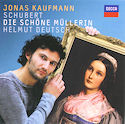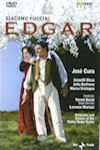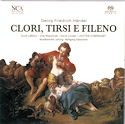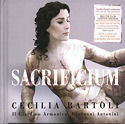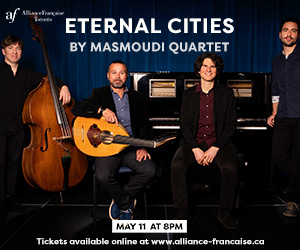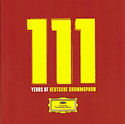 In 1998 Deutsche Grammophon published their Centenary Collection celebrating its first 100 years of sound recordings. The first track on the first disc was of the voice of Emile Berliner from a spoken letter to his sister in 1897. There were seven sets containing 63 discs occupying 700 cms (27½”) of shelf space. A new set, celebrating their first 111 years, contains 55 CDs in one box and occupies only 40cms (5½”) (DG 4778176).
In 1998 Deutsche Grammophon published their Centenary Collection celebrating its first 100 years of sound recordings. The first track on the first disc was of the voice of Emile Berliner from a spoken letter to his sister in 1897. There were seven sets containing 63 discs occupying 700 cms (27½”) of shelf space. A new set, celebrating their first 111 years, contains 55 CDs in one box and occupies only 40cms (5½”) (DG 4778176).
For this new set, the editors selected works in critically acclaimed performances and recordings from 1951 on, covering a broad spectrum of music from virtually every era and style. They have, in effect, produced a basic repertoire of a somewhat sophisticated taste, eminently of interest to both beginners and collectors alike.
Going through the recordings I sampled some of my old favourites, such as the superlative Carmina Burana with Eugen Jochum; Dvorak’s 9th with Kubelik sounding fresher than ever and the Dvorak Cello concerto with Rostropovich and Karajan. There’s Igor Markevitch’s brilliant and articulate Symphonie Fantastique and Carlos Kleiber’s supercharged Beethoven Fifth. Ferenc Fricsay is heard in his acclaimed Verdi Requiem; while Furtwangler’s renowned Schumann’s Fourth Symphony is coupled with his Haydn 88th. As expected, Karajan’s unsurpassed 1963 Beethoven Ninth is included as is today’s hot ticket, Gustavo Dudamel and his Youth Orchestra playing the Mahler Fifth.
No such a collection would be complete without an example of Fischer-Dieskau singing Schubert. Here is Winterreise with Gerald Moore. Other singers include Domingo, Kozenà, Netrebko, Quasthoff, Terfel, Villazón, and Wunderlich.
From a long list of great instrumentalists I was happy to see organist Helmut Walcha playing Bach and cellist Pierre Fournier in the complete Unaccompanied Suites of Bach. David Oistrakh plays the Tchaikovsky concerto in the 1954 Dresden recording with Konwitschny conducting and Richter plays the Rachmaninov second concerto in Warsaw. Martha Argerich plays all 26 Preludes of Chopin and Pollini plays both sets of the Etudes while Benedetti Michelangeli plays Volume 1 of the Debussy Preludes. Horowitz in a memorable Moscow concert in 1986 still impresses. Wilhelm Kempff’s ever classical Beethoven is heard in the Fourth and Fifth Concertos with Leitner and the formidable Emil Gilels, at his peak, is heard playing Beethoven’s Walstein, Les Adieux & Appassionata sonatas. Maria João Pires’ performance of the complete Chopin Nocturnes remains a special experience and the once controversial Ivo Pogorelich plays Scarlatti sonatas.
Today’s generation is represented by Anne Sophie Mutter playing the Brahms concerto with Karajan, her mentor, while Hillary Hahn plays Bach Concertos and Lang Lang plays concertos by Tchaikovsky and Mendelssohn. The Emerson String Quartet turns in a stunning performance of Bach’s Art of the Fugue. Quoting the cellist of the quartet, “I don’t know if there’s scientific evidence to support it, but when I listen to this music I feel my brain cells being re-aligned.” I truly believe him.
The above discs are just a selection from this exceptional collection, for which space constraints preclude a complete listing. Each of the discs is in a fine cardboard sleeve bearing a replica of the cover of the original issue. That’s how 55 of these plus a 134 page booklet fit nicely into a cube measuring only 40 centimetres. Branded a “limited edition,” the retail price is absurdly low and cheaper by far than downloading. Even if someone has more than quite a few of the discs the package is still a bargain. Also each recording sounds as if it were re-mastered to “Originals” standard.
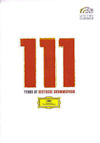 There is a companion set of DVDs for 111 years of Deutsche Grammophon (0734566, 13 DVDs). The editors selected the making of West Side Story with Leonard Bernstein and two Beethoven concertos with Pollini and Bohm; Carmen with Vickers and Karajan, also Mutter playing and directing Mozart’s fourth and fifth concertos. There are Furtwangler’s Salzburg Don Giovanni, Carlos Kleiber’s Der Rosenkavalier and La Traviata with Anna Netrebko. The Swan Lake ballet stars Fonteyn and Nureyev and Karajan’s Verdi Requiem has Pavarotti. Boulez’s Die Walküre from Bayreuth still impresses and finally a charming Peter and the Wolf with Sting and Claudio Abbado.
There is a companion set of DVDs for 111 years of Deutsche Grammophon (0734566, 13 DVDs). The editors selected the making of West Side Story with Leonard Bernstein and two Beethoven concertos with Pollini and Bohm; Carmen with Vickers and Karajan, also Mutter playing and directing Mozart’s fourth and fifth concertos. There are Furtwangler’s Salzburg Don Giovanni, Carlos Kleiber’s Der Rosenkavalier and La Traviata with Anna Netrebko. The Swan Lake ballet stars Fonteyn and Nureyev and Karajan’s Verdi Requiem has Pavarotti. Boulez’s Die Walküre from Bayreuth still impresses and finally a charming Peter and the Wolf with Sting and Claudio Abbado.
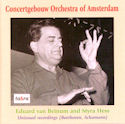 The late Eduard van Beinum who succeeded Mengelberg as conductor of the Concertgebouw Orchestra produced scores of extremely fine recordings for Philips and Decca beginning in 1946 with the Leonora 2 on two 10” 78s. His admirers, count me in, are always delighted to acquire CDs of unreleased performances. Tahra has two piano concertos with Dame Myra Hess recorded in concert (Tahra TAH672), the Beethoven 4th from 1952 and the Schumann A minor from 1956. These are marvellous performances that confirm that Hess’s exalted reputation was well earned. The sparkle and exuberance of these live performances from two of their generation’s acknowledged masters are timeless and not one wit ‘old hat’. The recorded sound is remarkably fine and I’d happily take this one to that desert island of imagination.
The late Eduard van Beinum who succeeded Mengelberg as conductor of the Concertgebouw Orchestra produced scores of extremely fine recordings for Philips and Decca beginning in 1946 with the Leonora 2 on two 10” 78s. His admirers, count me in, are always delighted to acquire CDs of unreleased performances. Tahra has two piano concertos with Dame Myra Hess recorded in concert (Tahra TAH672), the Beethoven 4th from 1952 and the Schumann A minor from 1956. These are marvellous performances that confirm that Hess’s exalted reputation was well earned. The sparkle and exuberance of these live performances from two of their generation’s acknowledged masters are timeless and not one wit ‘old hat’. The recorded sound is remarkably fine and I’d happily take this one to that desert island of imagination.
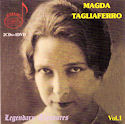 For decades Magda Taglieferro (1893-1986) was one of the most influential and noted pianists before the public. Born in Brazil to French parents, her father was her first teacher; she was taken to France at an early age, won the Premier Prix in the Paris Conservatoire in 1907 and was accepted by Alfred Cortot as a pupil. Noted for her individuality, flamboyance and charisma in performance, she also had an illustrious recording career spanning more than half a century, with composers active in Paris at the time, Ravel, Poulenc, Milhaud, d’Indy, Hahn, and Ibert writing works dedicated to her or with her in mind. EMI and others have issued parts of her legacy but there remain many recordings not yet on CD, including those recorded in Brazil during her frequent stays there. A new set from DOREMI (DHR-7961-3 2CD+DVD) includes material new to CD. Included are studio recordings from Brazil and live concerts from Paris, featuring Chopin, Mozart, Prokofiev, Debussy and Hahn. Her personal approach to Chopin is quite fascinating, never tentative. The same assuredness is heard in her brilliant Prokofiev and her crisp and stylistic Mozart. The package includes a DVD of the Prokofiev 3rd concerto and two Debussy pieces. The sound throughout is pleasant.
For decades Magda Taglieferro (1893-1986) was one of the most influential and noted pianists before the public. Born in Brazil to French parents, her father was her first teacher; she was taken to France at an early age, won the Premier Prix in the Paris Conservatoire in 1907 and was accepted by Alfred Cortot as a pupil. Noted for her individuality, flamboyance and charisma in performance, she also had an illustrious recording career spanning more than half a century, with composers active in Paris at the time, Ravel, Poulenc, Milhaud, d’Indy, Hahn, and Ibert writing works dedicated to her or with her in mind. EMI and others have issued parts of her legacy but there remain many recordings not yet on CD, including those recorded in Brazil during her frequent stays there. A new set from DOREMI (DHR-7961-3 2CD+DVD) includes material new to CD. Included are studio recordings from Brazil and live concerts from Paris, featuring Chopin, Mozart, Prokofiev, Debussy and Hahn. Her personal approach to Chopin is quite fascinating, never tentative. The same assuredness is heard in her brilliant Prokofiev and her crisp and stylistic Mozart. The package includes a DVD of the Prokofiev 3rd concerto and two Debussy pieces. The sound throughout is pleasant.
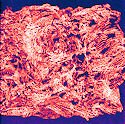 Silverwater
Silverwater

